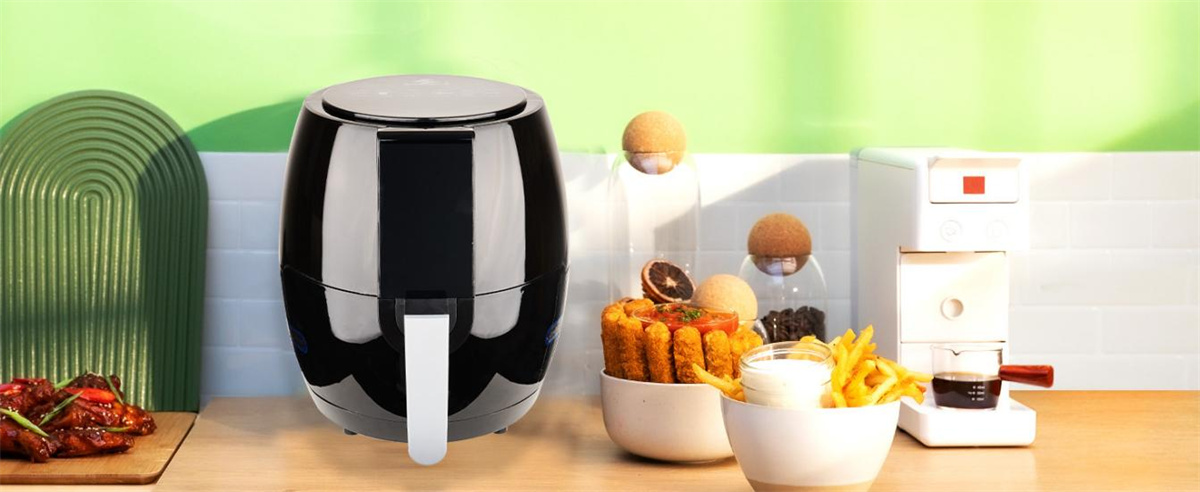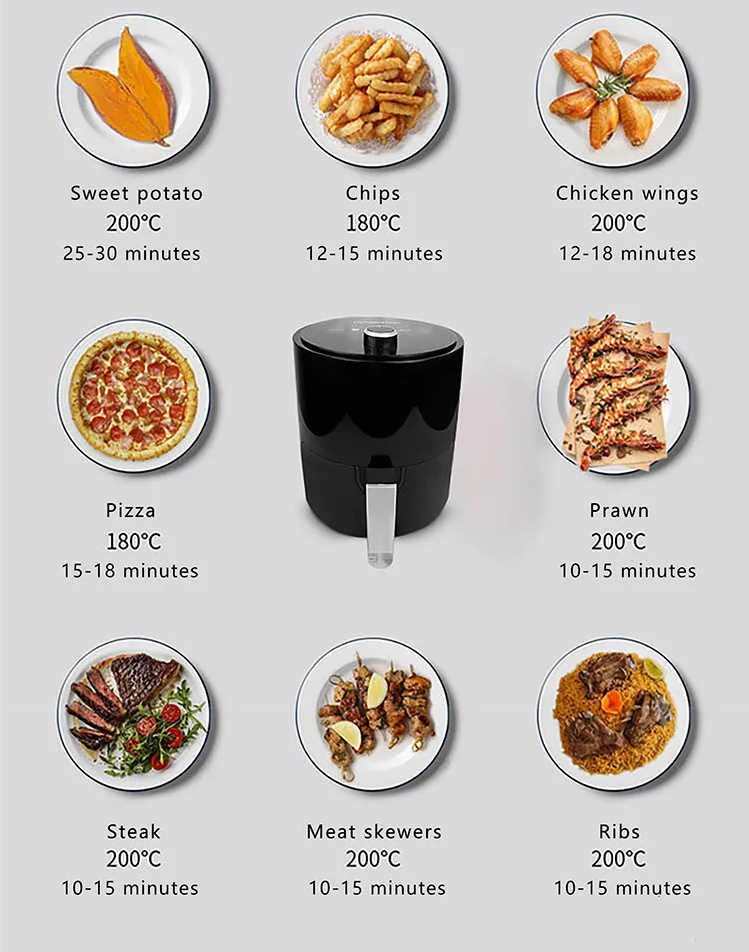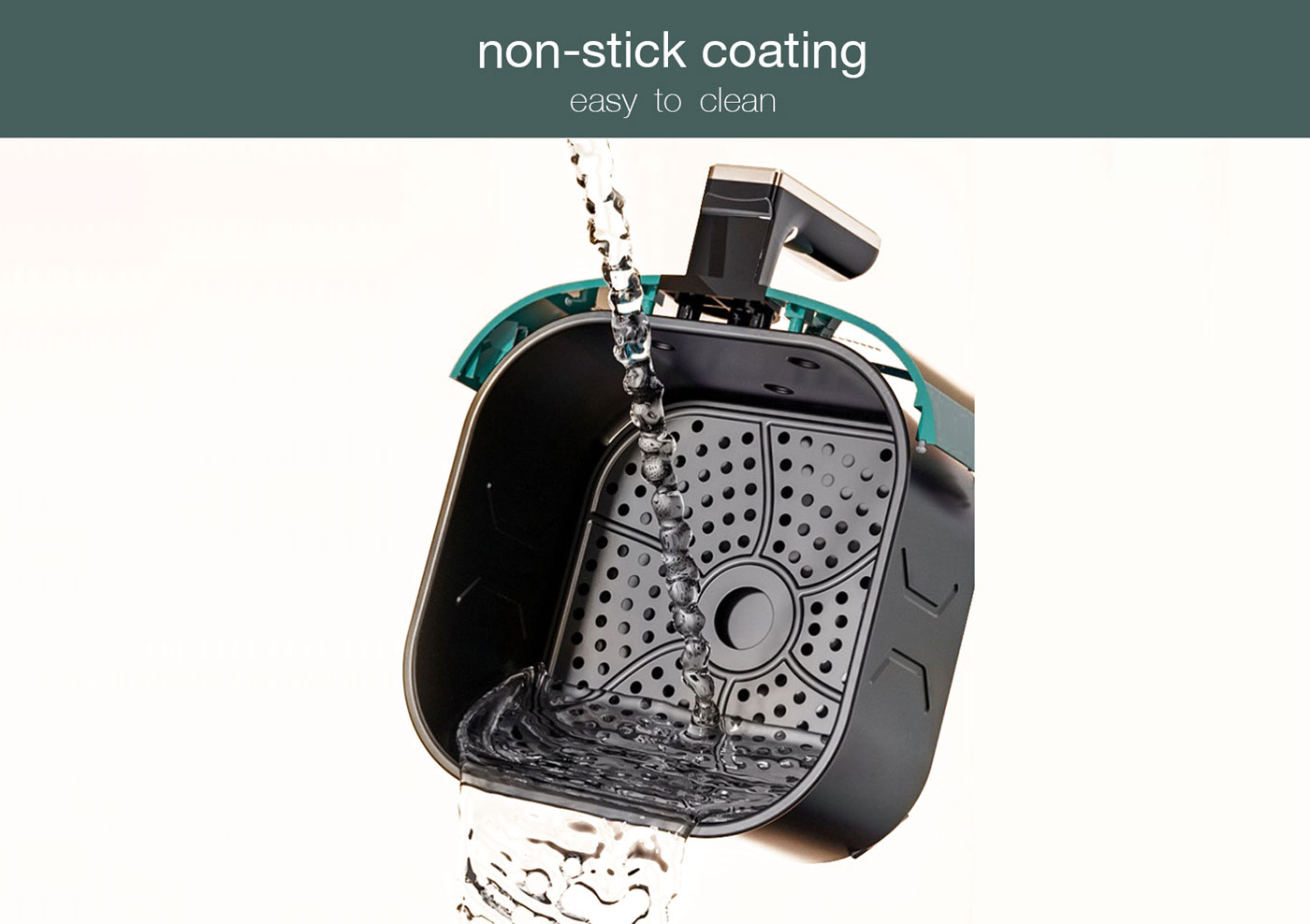
Air fryers have surged in popularity, becoming a staple in over 36% of American households. Their appeal lies in offering a healthier cooking alternative that retains the crispy texture we love. However, amidst their benefits, safety remains paramount. This blog aims to guide you on Avoid Getting Burned and ensuring your air frying experience is both enjoyable and safe.
Understanding Your Air Fryer
Familiarize Yourself with the Manual
Reading the manual is crucial for understanding your air fryer. It contains essential instructions and safety advice tailored to your specific appliance.
Key sections in the manual provide detailed insights on operating procedures and troubleshooting guidelines.
Know the Components
Identifying hot surfaces within your air fryer ensures safe handling during and after cooking sessions.
Understanding the control panel functionalities is key to optimizing your air fryer's performance.
Proper Placement
The majority of air fryers circulate heat inside a small cooking area using fans. The majority of models feature vents since heat needs to go somewhere when it has served its purpose. They should never be fully closed up and can be found on the top, side, or even back.
Placing your air fryer on a flat, stable surface prevents accidents such as tipping over during operation. You must keep your air fryer away from a wall and other appliances in order to prevent it from overheating. If you don't, there's a chance that your air fryer will overheat and, in the worst case scenario, catch fire.
Avoiding flammable surfaces around the air fryer minimizes fire hazards and ensures safe usage. Don’t let the air fryer hot air ventilation openings blow into electrical outlets. You need to leave space around the air fryer for the vent to circulate. This is safe air frying.
Safe Operating Practices
When Avoid Getting Burned in your air fryer, following safe operating practices is essential for a secure cooking experience.
Preheating and Loading Food
To prevent burns, Preheating guidelines should be strictly adhered to. Begin by preheating your air fryer according to the recommended time and temperature. This ensures that your food cooks evenly and thoroughly.
If you don’t wait for the device to heat up before you put your food in, you are at severe risk of ruining it or yourself. Food placed in while it’s heating up won’t cook properly, leaving it cold, uneven, or just plain gross. There can even be some potential health risks if food like chicken or steak is undercooked you can get very sick. So remember that patience is important in every facet of cooking. You don’t want to chop too fast or you might lose a finger and you don’t want to undercook your food or it could be worse.
When loading food into the basket, use Safe methods such as placing items in a single layer without overcrowding. Overloading the basket can lead to uneven cooking and potential burning.
Using Protective Gear
Don’t burn yourself or your countertops. There are internal and external components of the air fryer which get super hot during cooking. It’s easy to burn yourself so make sure to not touch any of those hot elements with your bare hands. Do use a silicone glove or oven safe mitts. Hot air fryer baskets and lids should be placed on a silicone trivet or heat-safe board or mat.
Prioritize safety by utilizing Protective equipment like oven mitts to shield your hands from hot surfaces when handling the air fryer or removing cooked food. Additionally, consider other protective gear such as heat-resistant gloves or aprons for added protection against burns.
Monitoring the Cooking Process
You must be aware of how long your food will take to cook when utilising an air fryer. It may start to get a little too crispy or even burn if you leave it in for an extended period of time. Food can catch fire when it burns, particularly if you are using parchment paper underneath. That chicken wing you left in for an extra 15 minutes can turn into a huge blaze very quickly, so it’s important to keep an eye on how long you’ve left your food in the air fryer.
Ensure a safe cooking environment by Regularly checking on food throughout the cooking process. By monitoring your meal's progress, you can prevent overcooking and avoid burnt dishes. Avoid Overfilling the basket, as this can obstruct proper air circulation, leading to uneven cooking and potential burning. Remember to Shake the basket periodically to ensure that food doesn't stick or burn during the cooking cycle.
Since each dish is unique, you should experiment with several recipes to determine the ideal timing for your particular model. But there's no reason to cook any kind of food in an air fryer for more than 25 minutes, unless it's baked potatoes or chicken thighs. Even so, you should take a moment to stir about and realign your food in the tray.

Post-Cooking Safety
After the culinary adventure with your air fryer, ensuring Avoid Getting Burned is crucial for a safe and enjoyable experience.
Safe Removal of Food
When it's time to savor your delicious creations, Using tongs or spatulas is the recommended method for extracting hot food from the air fryer. This practice prevents accidental burns and ensures a seamless transition from cooking to serving. Remember always to Allow food to cool before handling to avoid any risk of burns or scalds.
Cleaning and Maintenance
Maintaining your air fryer is essential for its longevity and safety in the kitchen environment. Don’t clean the racks or air fryer basket with harsh metal scouring pads. To clean an air fryer, you should unplug it, take out all of the removable parts, and wash it with warm water and dish soap. Make sure to not use any material that’s too abrasive as it could end up taking off the non-stick coat. If there’s stuck-on or burnt food you can’t get off no matter how much you scrub, try leaving baking soda on the problematic areas and let it sit for 20 minutes. Just remember not to completely submerge the air fryer’s mechanical components in water as it will most likely not turn on again afterward.
Regularly perform Maintenance checks on your appliance to detect any issues early on and prevent potential hazards. By following these steps diligently, you can effectively Avoiding fire risk or burn hazards associated with neglected maintenance routines.

Common Mistakes to Avoid
Overcrowding the Basket
Make sure that every part of your meal may be touched by the heat that rotates inside the air fryer before cooking. This is the reason you should occasionally flip your food while it's in the air fryer. However, you also want to be careful not to pack the pan too full, since this will prevent whatever you cook from getting the desired level of crispness.
Although every air fryer is unique, it's a good idea to make sure your pieces aren't clumped or stacked on top of one another. Even while there may be less french fries or chicken nuggets in a single round, such things will taste much better when they aren't squishy or saturated in oil from being crammed in too many people.
Risks of overcrowding
Increased risk of uneven cooking and potential hazards.
Food may not cook thoroughly, leading to dissatisfaction with the end result.
Proper food arrangement
Arrange food items in a single layer for optimal air circulation.
Ensuring proper spacing between items prevents overlapping and promotes even cooking.
Using Foil Unnecessarily
Don’t use use perforated parchment paper at high heat without having food over it. If you don’t have enough food weighing down the parchment paper, it will fly around when the hot air circulates and cover the food. This will make the food cook unevenly. Also, the parchment might burn if it’s flying around and hitting the hot heating element.
Impact on air circulation
Excessive use of foil can obstruct airflow within the air fryer, affecting cooking efficiency.
Improper foil placement may lead to unevenly cooked or burnt food due to restricted heat distribution.
Proper use of foil
Use foil sparingly: Only cover dishes when necessary, leaving enough space for hot air to circulate.
Avoid covering the entire basket: Partially cover specific areas if needed, ensuring adequate ventilation.
Check food periodically: Monitor cooking progress when using foil to prevent burning or undercooking.
Leaving on the plastic
Reheating frozen food from the local grocery shop is a breeze with air fryers. However, if you're in a hurry, you can forget to take it out of the package and leave it in the plastic container. This is a complete no-no and shouldn't be done in an air fryer, unlike some items that can be cooked in the microwave or an oven.
Plastic can, for starters, contaminate food and cause health issues later on. However, there is a more pressing issue: plastic can burn or catch fire quickly, destroying your food or setting your house on fire.
Unless specifically made to fit inside, you should always remove prepackaged food from its container before cooking it in an air fryer. You might save a great deal of time—or possibly your life—by taking that little step.
Implementing key safety tips is paramount when using air fryers. Users must adhere to guidelines meticulously to ensure a secure cooking environment. Enjoy the benefits of air frying while prioritizing safety measures, preventing accidents and burns. Medical News Today highlights the importance of cautious usage to eliminate risks associated with traditional frying methods. Remember, following instructions diligently guarantees a safe and enjoyable culinary experience with your air fryer.
Post time: Jun-26-2024

